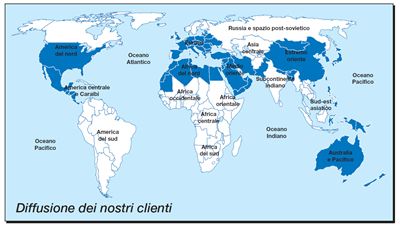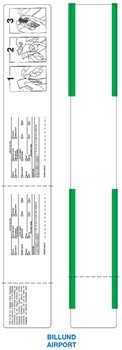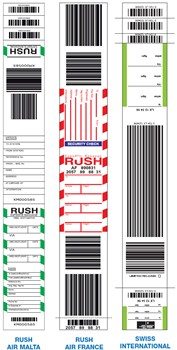
Air Baggage RFid Labels production
Our interest in new technologies for tracking and tracing
We have always been oriented towards product innovation, and have been interested in the study of new applications helped by evolutionary tracking and tracing techniques for quite a while now: smart labels with integrated RFID devices that act as mobile memories, on which all the information about passengers and their itineraries can be recorded.
Baggage tagged in this way will transit through the confluence stream at the check-in desks, where it will be monitored and controlled so it is sent in the relevant direction. This process will be ensured by the presence of detectors along the route the baggage takes, which will ensure that it will be directed to the aircraft hold.


Alcuni dei nostri clienti
| Bel Air | Crossair |
| Dubai | Sea Aeroporti di Milano |
| Emirates Airlines | Aviapartner |
| China Easter Airlines | Alitalia |
| Philippines Airlines | Air Holland |
| Billund Airport | Miascor Swissport |
| El Al (Israel) | Airport Associates |
| Quantas | Dutchbird |
| Monarch Air | Swiss International |
| Rush Air Malta | Salzburg Airport |
| Saps Pakistan | Aeroporti di Roma |
| American Airlines | Rush Air France |
| Jal Japon |

The evolution
There are several trials of RFID in baggage handling in progress or planned for the immediate future. The most advanced regions are Asia and Europe. Air France and KLM have a joint project at the “C. de Gaulle” airport in Paris and at Schipol, while the South Korean company Asiana is holding trials in six airports in the country. In Asia, bar codes are less efficient and ready to be abandoned and Europe has many hubs where large exchange volumes of passengers and baggage between flights make RFID very attractive.
A recently published report comments that the events in London have shown that air transport has a desperate need for new systems to monitor passengers and baggage and ensure peace of mind.
RFID systems, whose turnover in the field of civil transport is expected to grow to 128 million Euros by 2016, will play a key role.
Much of this growth will be due to the use of RFID for baggage labelling, following the decision taken by IATA in October 2005 to opt for a single world standard for these applications: The RFID system
on the UHF (Ultra High Frequency 860/960MHz) band.
Real time geo-location systems for things and objects within the airport area is destined to grow, also as a consequence of increasing anti-terrorism control, assigning an RFID tag to any person entering the area to monitor their movements.
Applications of this type will most probably use the frequency band at 2.45 GHz, making as much use as possible of existing wireless networks (hot spots that allow travellers in transit to connect their laptops to the internet within the airport).
Point-to-point on demand labels




Pre-printed Point-to-Point hand baggage
Interline Tag



Screened Stickers
Key Hole / Name Label








